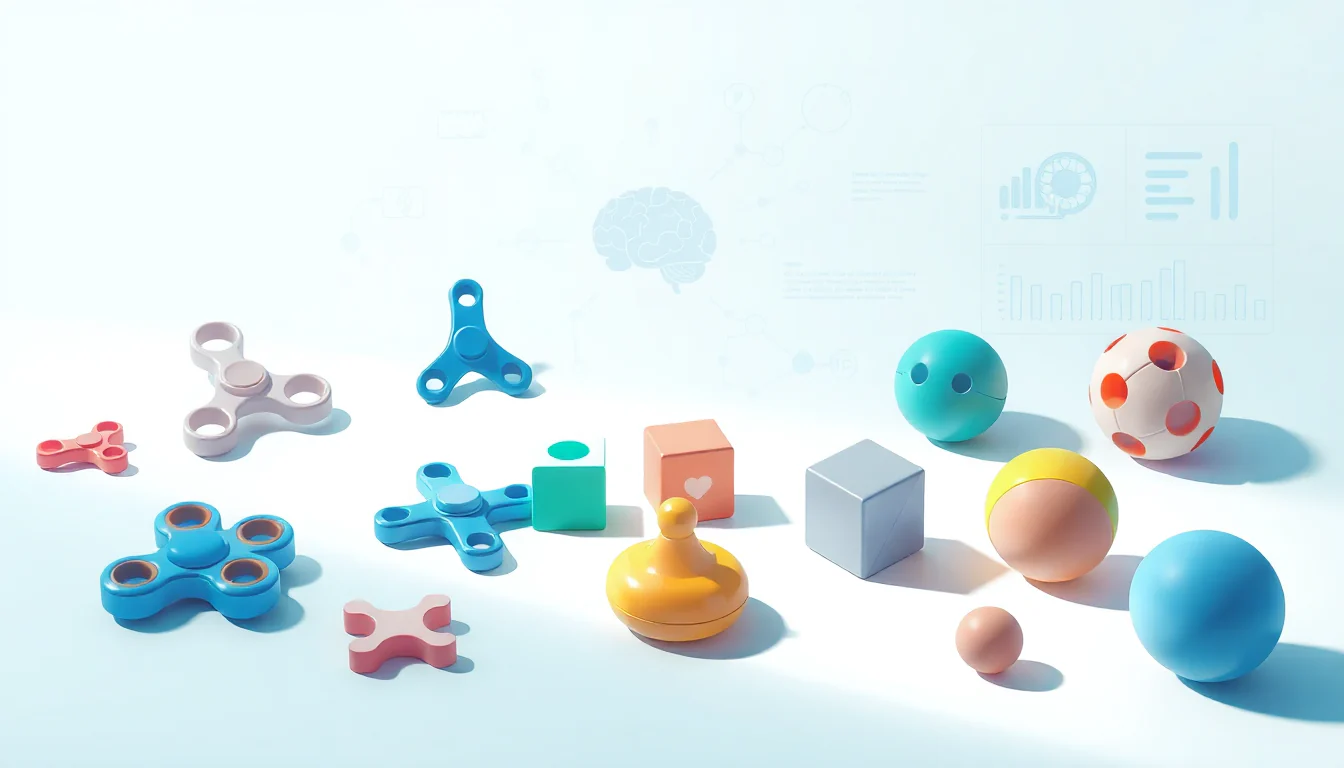Anxiety is a common mental health condition that affects millions of people worldwide. It can manifest in various ways, from persistent worrying to physical symptoms like rapid heartbeat and sweating. While there are several treatment options available, including therapy and medication, some individuals have found relief through the use of fidget toys.
Fidget toys are small, handheld objects designed to be manipulated or played with, often in a repetitive or rhythmic manner. These toys have gained popularity in recent years as a way to help manage anxiety and improve focus, particularly among individuals with conditions like ADHD or autism.
But how exactly do fidget toys help with anxiety? In this blog post, we’ll explore the science behind the benefits of fidget toys and what the research says about their effectiveness in managing anxiety.
The Science Behind Fidget Toys and Anxiety
Fidget toys work by providing a physical outlet for the restless energy and nervous tension that often accompanies anxiety. When we’re feeling anxious, our bodies go into a state of heightened arousal, with increased heart rate, muscle tension, and other physiological responses. Fidget toys can help to counteract this by engaging the hands and providing a calming, repetitive motion.
One of the key mechanisms by which fidget toys can help with anxiety is through the activation of the parasympathetic nervous system. This part of the nervous system is responsible for the “rest and digest” functions of the body, including slowing the heart rate and promoting a sense of calm. By engaging in the repetitive motion of a fidget toy, individuals can trigger the parasympathetic response and experience a reduction in anxiety symptoms.
Additionally, research has shown that the act of manipulating a fidget toy can have a positive impact on cognitive function and attention. When we’re anxious, our ability to focus and concentrate can be impaired. Fidget toys can help to redirect our attention and improve our ability to stay present and engaged in the task at hand.
The Benefits of Fidget Toys for Anxiety
Numerous studies have explored the benefits of fidget toys for individuals with anxiety. Here are some of the key findings:
- Reduced Anxiety Symptoms: Several studies have found that the use of fidget toys can lead to a significant reduction in anxiety symptoms, including decreased heart rate, muscle tension, and subjective feelings of anxiety.
- Improved Focus and Concentration: As mentioned earlier, fidget toys can help to improve cognitive function and attention, which can be particularly beneficial for individuals who struggle with anxiety-related distractions or difficulty focusing.
- Increased Sense of Control: Fidget toys can provide a sense of control and mastery over one’s environment, which can be empowering for individuals with anxiety. The ability to manipulate a fidget toy can give a sense of agency and help to alleviate feelings of helplessness.
- Portable and Discreet: Fidget toys are often small and portable, making them easy to use in a variety of settings, including work, school, or social situations. This can be particularly helpful for individuals who experience anxiety in public or professional settings.
- Versatility: There is a wide range of fidget toys available, from simple stress balls to more complex mechanical devices. This allows individuals to find a fidget toy that best suits their personal preferences and needs.
Choosing the Right Fidget Toy for Anxiety
When it comes to selecting a fidget toy for anxiety, it’s important to consider individual preferences and needs. Some individuals may prefer a more tactile or sensory-based fidget toy, while others may prefer a more visually engaging option.
Some popular fidget toy options for anxiety include:
- Stress balls or squeeze toys
- Fidget spinners or cubes
- Kinetic sand or putty
- Fidget rings or jewelry
- Magnetic or bead-based toys
It’s also important to consider the portability and discreetness of the fidget toy, as well as any potential sensory or tactile preferences.
Incorporating Fidget Toys into Anxiety Management
Fidget toys can be a valuable tool in a comprehensive anxiety management plan, but they should not be used as a standalone solution. It’s important to combine the use of fidget toys with other evidence-based strategies, such as cognitive-behavioral therapy, relaxation techniques, and lifestyle changes.
When incorporating fidget toys into an anxiety management plan, it’s important to:
- Identify the specific triggers or situations that tend to elicit anxiety, and use the fidget toy as a tool to manage those situations.
- Practice using the fidget toy regularly, both during times of anxiety and during periods of calm, to build a habit and reinforce the calming effects.
- Experiment with different types of fidget toys to find the one that works best for your individual needs and preferences.
- Combine the use of fidget toys with other anxiety management strategies, such as deep breathing exercises or mindfulness practices.
By incorporating fidget toys into a comprehensive anxiety management plan, individuals can take an active role in managing their anxiety and improving their overall well-being.
Conclusion
Fidget toys have emerged as a promising tool for managing anxiety, with a growing body of research supporting their effectiveness. By engaging the hands and triggering the parasympathetic nervous system, fidget toys can help to reduce anxiety symptoms, improve focus and concentration, and provide a sense of control and mastery.
While fidget toys should not be used as a standalone solution, they can be a valuable addition to a comprehensive anxiety management plan. By experimenting with different types of fidget toys and incorporating them into daily routines, individuals with anxiety can take an active role in managing their symptoms and improving their overall quality of life.
If you or someone you know is struggling with anxiety, consider incorporating fidget toys into your anxiety management strategy. With the right approach, these small, handheld devices can make a big difference in managing the challenges of anxiety.

